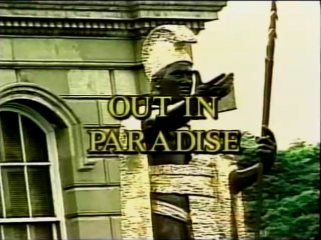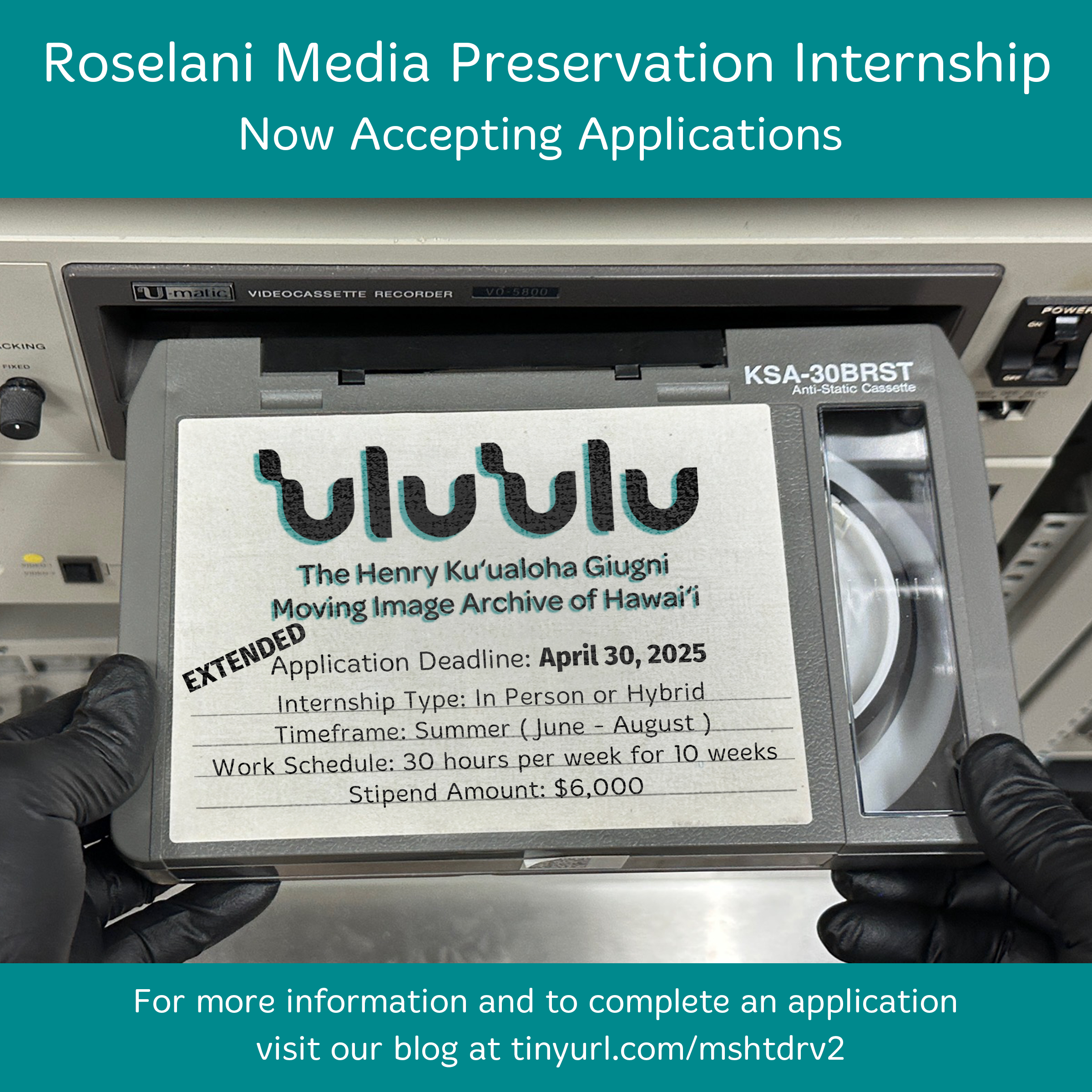A Reflection from Lilinoe Chinen
July 2, 2024 Tisha AragakiDuring part of the Spring 2023 Semester, we were lucky enough to partner with the Hawaiian Legacy Foundation and The James and Abigail Campbell Library at UH West Oʻahu in with the E Hoʻomau Internship. One of the interns that came to the program was Lilinoe Chinen, who worked with us in ʻUluʻulu to help continue to organize and work on the Hawaiian Legacy Foundation’s collection. Lilinoeʻs reflection of her time working in this new-to-her field are below.
While working at ʻUluʻulu, I created an inventory of film and audio reels we received and transcribed clips from Liʻa Legacy of a Hawaiian Man for closed captioning. Being an Accounting and Finance major, I had no prior knowledge about audio/visual materials. It was interesting to learn about the types of audio and film reels, how they were used, and how they are preserved. Working at ʻUluʻulu has made me more appreciative of older filmmakers and musical artists because it was much harder for them to create films with the equipment they had at the time. Seeing the audio reels up close also made me realize that music artists had fewer attempts to record and edit their songs.
I particularly enjoyed transcribing because I would see clips that didn’t make it into the documentary or learn other pieces of Hawaiian history in the process of researching the spelling of a name or song. This process also made me realize the importance of native speakers or someone who can accurately transcribe speech in another language. When I wasn’t able to transcribe speech or a song in Hawaiian Hōkū, the Assistant Archivist for Processing, would transcribe it. I also found it interesting to think about how to create closed captions in pidgin. Since pidgin is its own language, whether to use the pidgin spelling or English spelling was something I kept in the back of my mind when I transcribed some interviews. Working at ʻUluʻulu has made me more observant when I watch TV shows and more curious when it comes to the recording and editing of older music.




The process of digitizing the HLF papers was intriguing because each folder contained different documents related to Listen to the Forest. The documents in the folders would range from letters to handwritten notes, transcripts, newspaper clips, and school drawings. I would scan the papers in, upload them, and create a description of what was in each folder. Some of the papers were straightforward like forms, letters, and transcripts, while other documents like handwritten notes required more interpretation. An unexpected challenge I ran into was reading Eddie’s handwritten notes. He had beautiful cursive handwriting and I had to familiarize myself with cursive to ensure that I was reading it correctly.
While making the descriptions of the papers, I learned about the process of creating a film. Prior to the E Hoʻomau internship, I hadn’t thought about the planning that goes into filming each scene, b-roll shots, or scripts for narration. I was able to learn about each step of Eddie and Myrna Kamae’s filmmaking process by digitizing the documents. My favorite folders to scan in were the folders containing school programs and letters from school kids. It was heartwarming to read letters about how Listen to the Forest resonated with the children.
We are also happy that Lilinoe will be able to continue working with us through the summer! Thank you to the Hawaiian Legacy Foundation and the James and Abigail Campbell Library for your continuing support!
Repost from June 8, 2023
Back to all News & Events-
Letter of Appreciation and Reflection from HLF E Hoʻomau Intern Kaua Kalaiwa‘a
 Letter of Appreciation and Reflection from HLF E Hoʻomau Intern Kaua Kalaiwa‘a
Letter of Appreciation and Reflection from HLF E Hoʻomau Intern Kaua Kalaiwa‘a
6/17/2025 -
Rewinding Hawaiʻi's queer history through the Out in Paradise collection
 Rewinding Hawaiʻi's queer history through the Out in Paradise collection
Rewinding Hawaiʻi's queer history through the Out in Paradise collection
5/16/2025 -
Application Deadline Extended - 2025 Roselani Internship
 Application Deadline Extended - 2025 Roselani Internship
Application Deadline Extended - 2025 Roselani Internship
3/13/2025
